During this practicum, I guided my students through an in-depth study of David A. Robertson’s novel, The Barren Grounds—a fictional story exploring Indigenous culture, identity, belonging, responsibility, community, teachings, and the importance of land and place.
During the unit, students were asked to think critically, creatively, and reflectively while exploring ideas within and beyond the text. The focus was on building student reading and listening skills to aid in comprehension and connection-making.
Students worked on organizing their ideas and expressing comprehension of the novel orally (in whole-class and small group discussions), visually (in shoe box dioramas showcasing their favourites scenes), and in writing (via sketch-noting, word collecting, informal journaling, responses to comprehension questions, and in paragraphs summarizing their favourite scenes and how the characters have changed and evolved from the beginning of the story to the end).
Students were also responsible for writing a book recommendation that included a review, hook, new blurb for the back cover, an illustration for the front cover, and a rating out of 5 stars (student exemplars below).

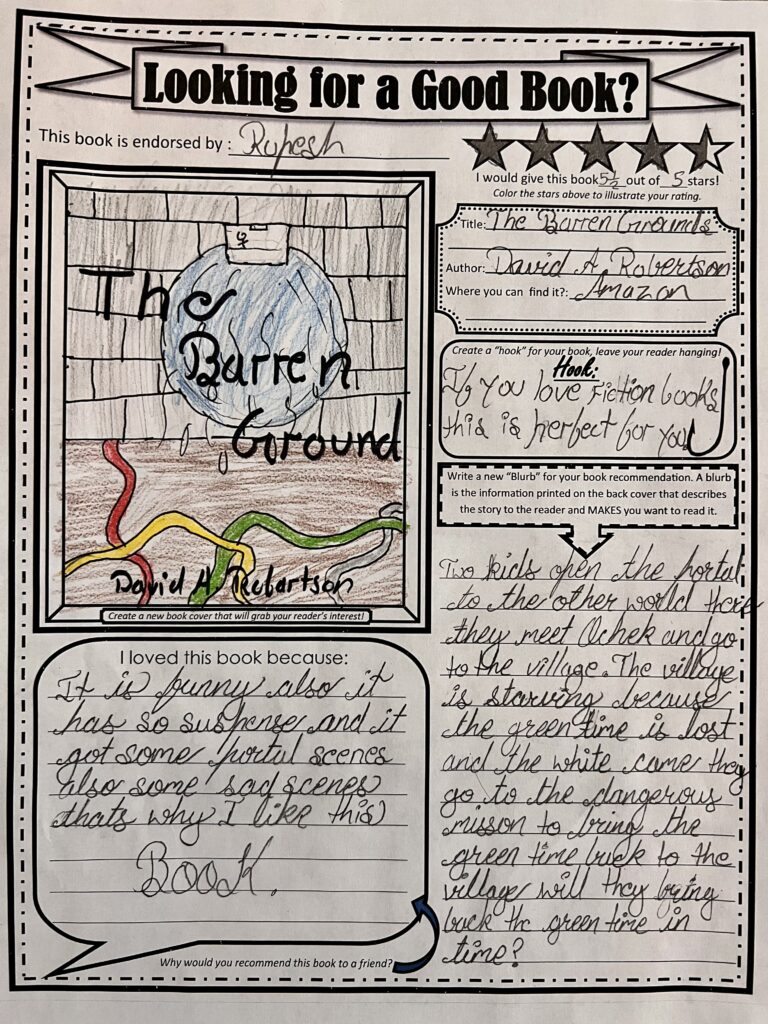

As their final task, students had to complete a “Novel Study One-Pager” that required them to take a closer look at the novel and analyze the characters, quotes, and actions, and connect them to a theme. Students had to pick a theme related to identity, belonging, responsibility, community, teachings, or land & place, and then represent their understanding on one piece of paper using quotes, pictures, doodles, and examples from the novel.
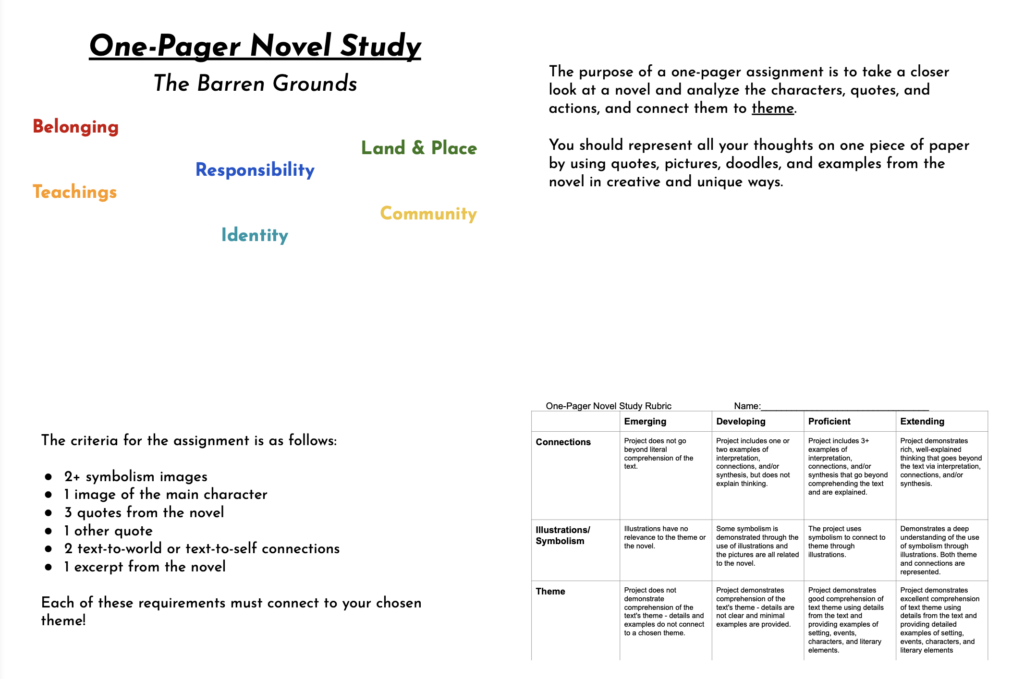
The instructional portion went really well, with students engaged and asking questions during the class discussion, but I could tell that most students needed further clarification and direction on pin-pointing theme so I provided 1-2 theme examples related to each of the main topics that were suggested in my slideshow (i.e. belonging, community, identity, responsibility, teachings, and land & place). This helped students get going, especially those who normally find it hard to begin tasks. I also provided loose-leaf paper to students to get them jotting down theme ideas.
This task became more challenging when students had to start looking for quotes and excerpts. Several overly reliant students got overwhelmed by the idea of looking through the book, saying that it was impossible and comparable to finding needles in a haystack. I found myself having to look through my hard copy of the novel, pointing students in the right direction, calling out quotes and page numbers, but with 27 of them (and only one of me) I could not get to everyone.
As such, I went home that evening and scoured through the entire novel, making note of page numbers that tied to each theme so that I could create a document for students to consult and reference while looking for quotes and excerpts:
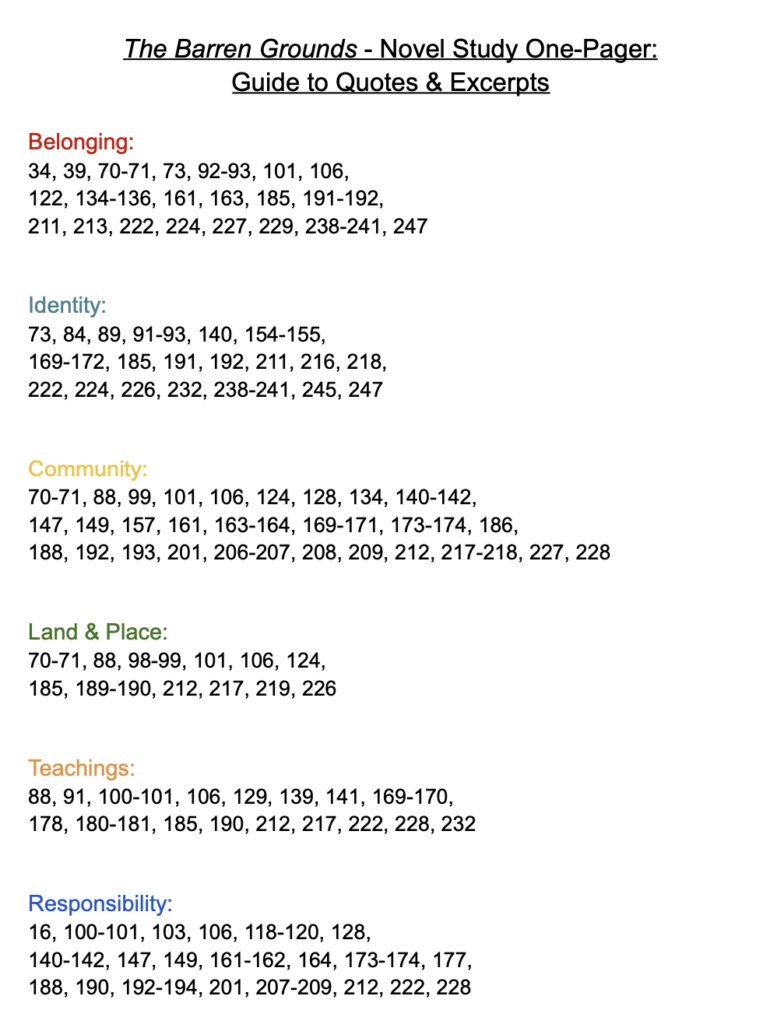
This guide helped students be successful, allowing them to produce some amazing one-pagers:
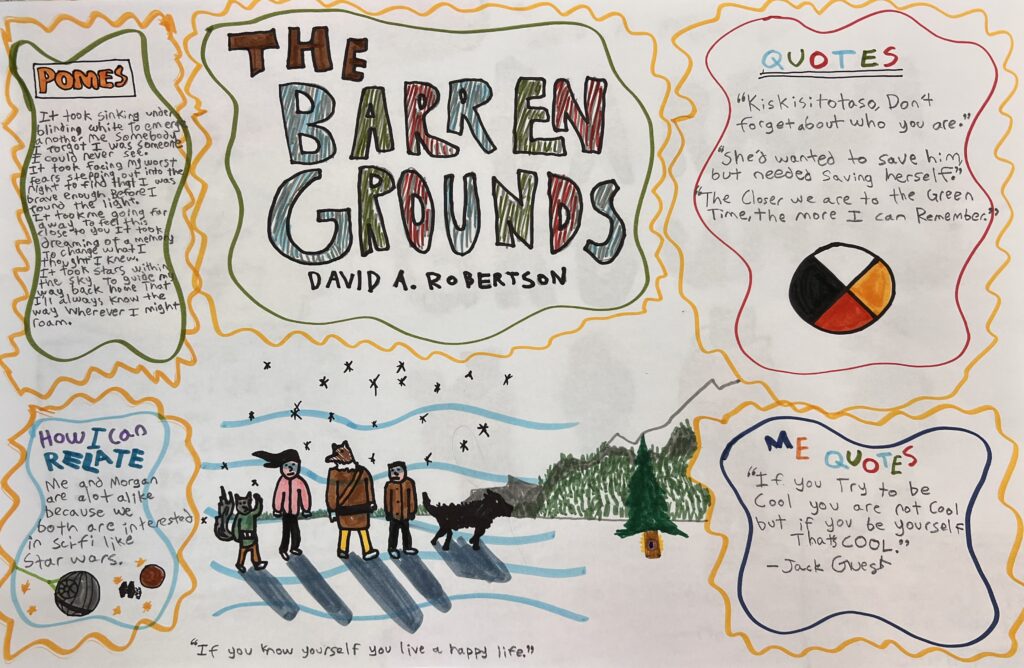
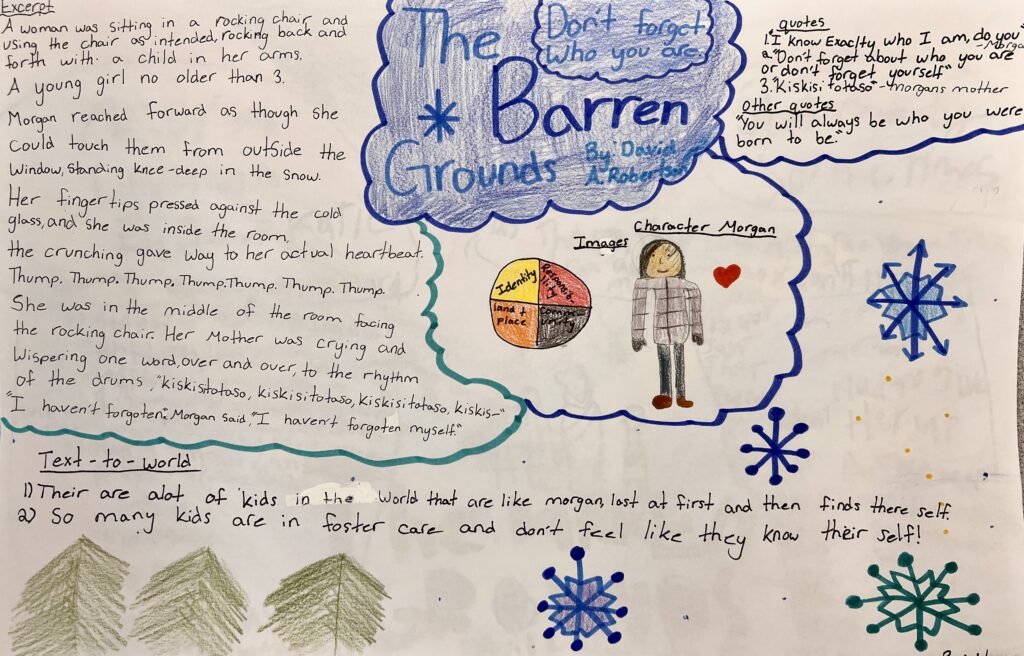
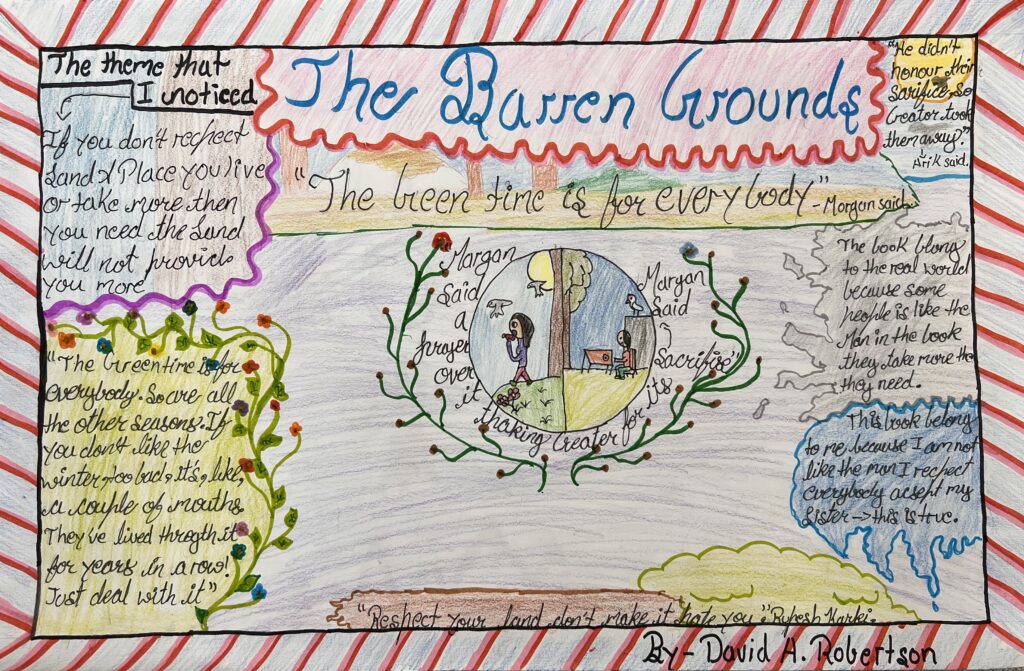
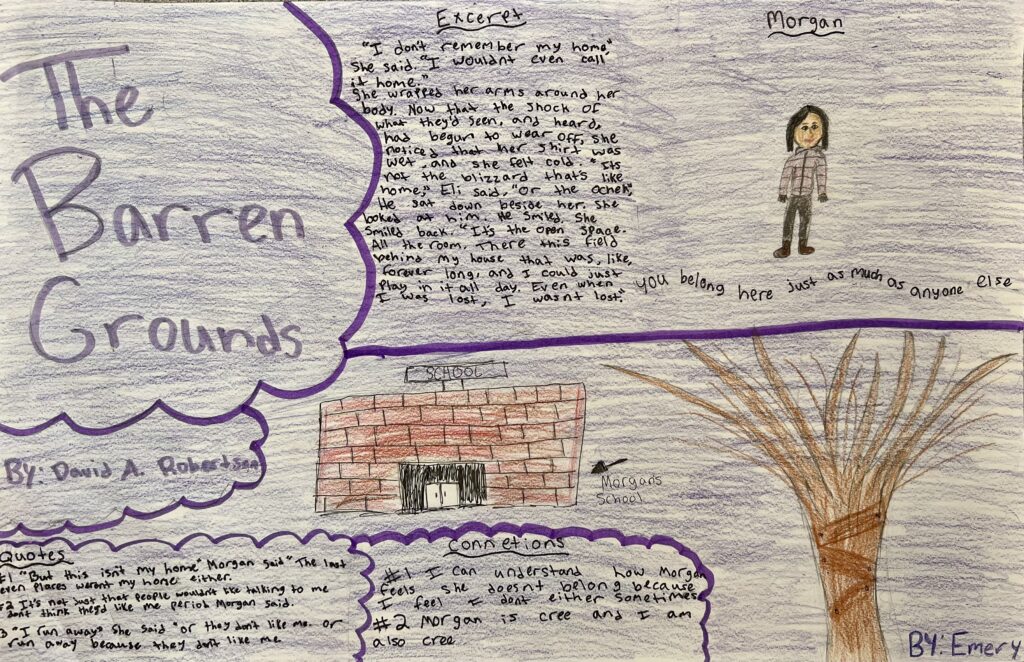
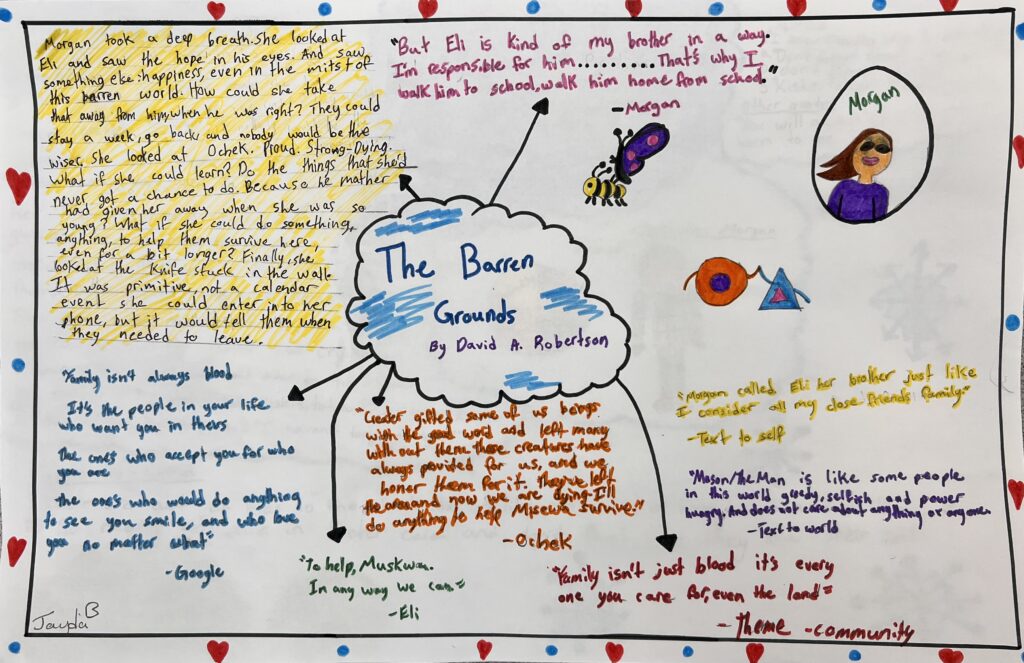

My students and I thoroughly enjoyed this novel and I highly recommend studying it with any grade 4-7 class! If you are interested in partaking in this novel study, you can find my unit plan, lessons, and resources here:
Together in education,
Ms. H

Leave a Reply